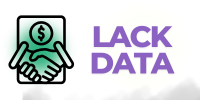Using Audience Strategies A few weeks ago, we welcomed Jonathan Vidor, a self-taught internet enthusiast who has risen to international expert status. During this webinar, Jonathan introduced us to the various audience strategies that allow for better targeting and improved PPC strategy performance.
In this recap, I present to you the essential points of this exhaustive and enriching conference.
The hearings
Jonathan begins with a helpful reminder: what is an audience?
The idea is to find out who is behind the query entered on Google. Who are the people behind this query? Google acquires this information by:
- Queries made on Search;
- Gmail boxes;
- The sites you visit (through the Google b2b email list Display Network);
- Your Google account;
- YouTube;
- DoubleClick Bid Manager (for those who use this tool).
You can group users into three categories :
- Your customers;
- Warm prospects (who have already interacted with your brand or site but have not yet ordered);
- Prospects (those who have the same profile as your customers or those who have demonstrated a strong purchasing intention).
Jonathan says that if you miss out on what information could you add to your briefs audiences, you’re missing out on 20 to 30 percent of your revenue potential.
There are four methods offered by Google to refine your audience:
- Demo (demographic: age, gender);
- Similar Audience (profiles similar to my customers);
- Customer Match (profiles from my CRM database);
- Remarketing (visitors and buyers on my site).
The results are remarkable: thanks to RLSA (Remarketing lists for search ads), the acquisition cost drops by 44%; thanks to Customer Match, by 57%; thanks to Similar Audience by 29%.
Retargeting Search & Shopping
Jonathan gives us an interesting piece of data: if we target Internet users who have already visited our site, we have a 20% greater chance of converting than if we target an unknown Internet user.
Jonathan’s technique consists of creating different clean email lists based on the position reached by visitors in the conversion funnel: upper funnel (visitors to your site), middle funnel (interested users), lower funnel (hot prospects).
These three lists correspond to different groups of pages:
– Upper funnel : home page, category pages, content pages, FAQ;
– Middle funnel : product pages, search results pages;
– Lower funnel : command tunnel.
The idea is to create three different lists with different bidding strategies to target users at each stage of their purchasing journey. To get the most out of this technique, don’t hesitate to test and modify your bidding strategies based on the results.
